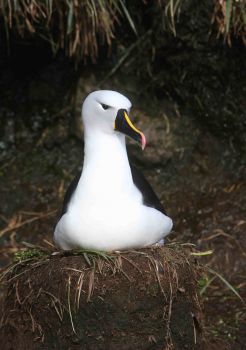Jean-Baptiste Thiebot (Centre d’Études Biologiques de Chizé, Villiers-en-bois, France) and colleagues have written in the journal Polar Biology on the curious case of recapturing an albatross at its Amsterdam Island breeding site with a message added to its leg by a longliner at sea.
The paper’s abstract follows:
“Commercial fisheries currently pose a serious threat at sea to the conservation of a number of pelagic seabirds. However, these interactions are complex, and reports on population-specific bycatch in the high seas are scarce. Here we report the case of an Indian yellow-nosed albatross Thalassarche carteri re-sighted on Amsterdam Island after an apparent capture by an Indonesian long-liner, as indicated by a message attached to the bird. This record demonstrates that Amsterdam birds may interact with long-liners indeed, at least during winter, and that such interactions are not systematically lethal. We suggest that bycatch sub-lethal effects should be investigated at colonies with high risks of individual capture at sea.”

Indian Yellow-nosed Albatross, photograph by Peter Ryan
Reference:
Thiebot, J.-B., Demy, J., Marteau, C. & Weimerskirch, H. 2015. The rime of the modern mariner: evidence for capture of yellow-nosed albatross from Amsterdam Island in Indian Ocean longline fisheries. Polar Biology DOI 10.1007/s00300-015-1680-5.
John Cooper, ACAP Information Officer, 21 March 2015

 English
English  Français
Français  Español
Español